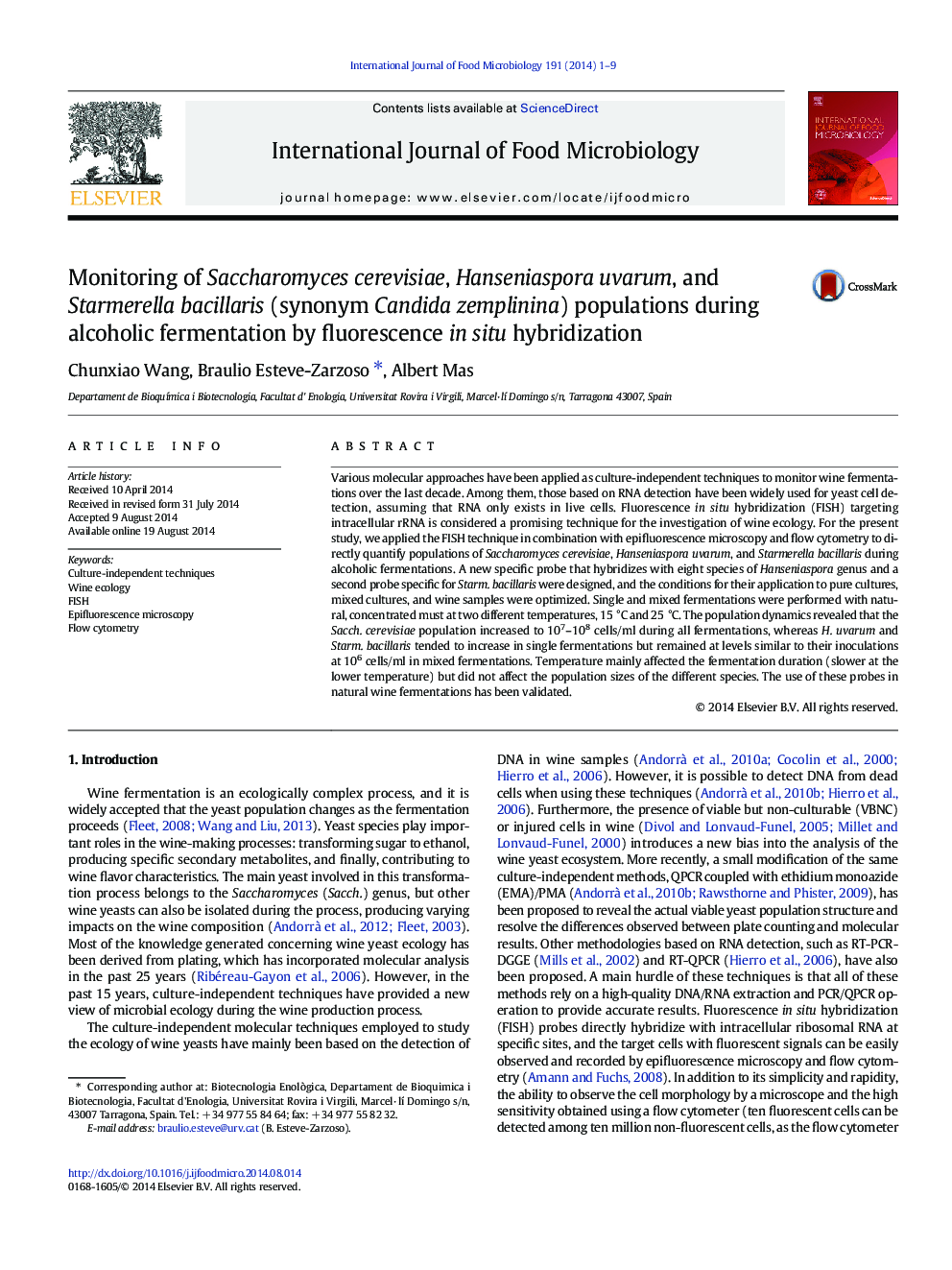| کد مقاله | کد نشریه | سال انتشار | مقاله انگلیسی | نسخه تمام متن |
|---|---|---|---|---|
| 4366714 | 1616592 | 2014 | 9 صفحه PDF | دانلود رایگان |

• The use of FISH and flow cytometry in wine ecological studies is demonstrated.
• FISH probes and conditions for Hanseniaspora and Starm. bacillaris were developed.
• Sacch. cerevisiae, H. uvarum and Starm. bacillaris were analyzed in wine samples.
Various molecular approaches have been applied as culture-independent techniques to monitor wine fermentations over the last decade. Among them, those based on RNA detection have been widely used for yeast cell detection, assuming that RNA only exists in live cells. Fluorescence in situ hybridization (FISH) targeting intracellular rRNA is considered a promising technique for the investigation of wine ecology. For the present study, we applied the FISH technique in combination with epifluorescence microscopy and flow cytometry to directly quantify populations of Saccharomyces cerevisiae, Hanseniaspora uvarum, and Starmerella bacillaris during alcoholic fermentations. A new specific probe that hybridizes with eight species of Hanseniaspora genus and a second probe specific for Starm. bacillaris were designed, and the conditions for their application to pure cultures, mixed cultures, and wine samples were optimized. Single and mixed fermentations were performed with natural, concentrated must at two different temperatures, 15 °C and 25 °C. The population dynamics revealed that the Sacch. cerevisiae population increased to 107–108 cells/ml during all fermentations, whereas H. uvarum and Starm. bacillaris tended to increase in single fermentations but remained at levels similar to their inoculations at 106 cells/ml in mixed fermentations. Temperature mainly affected the fermentation duration (slower at the lower temperature) but did not affect the population sizes of the different species. The use of these probes in natural wine fermentations has been validated.
Journal: International Journal of Food Microbiology - Volume 191, 17 November 2014, Pages 1–9